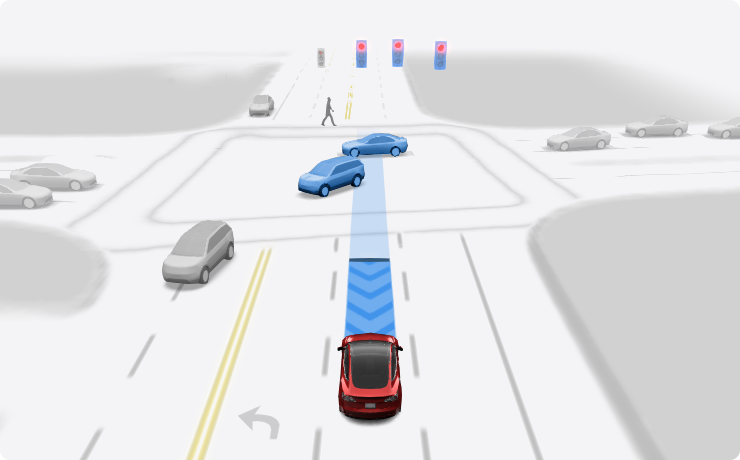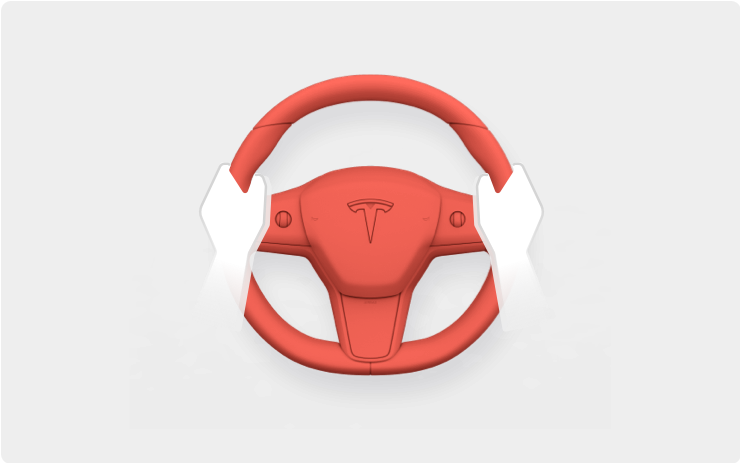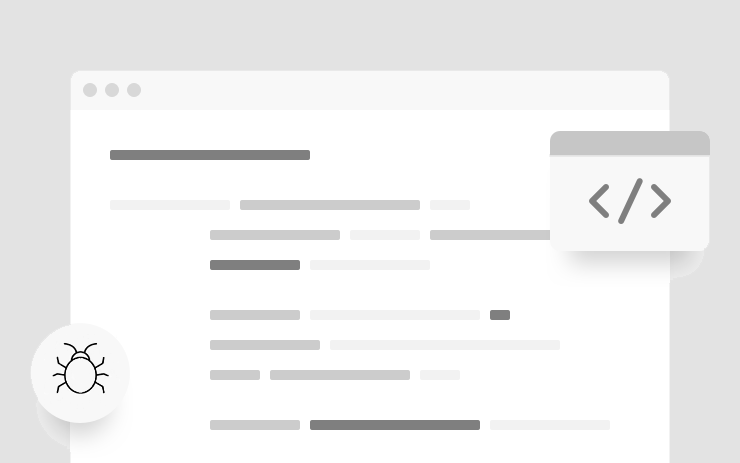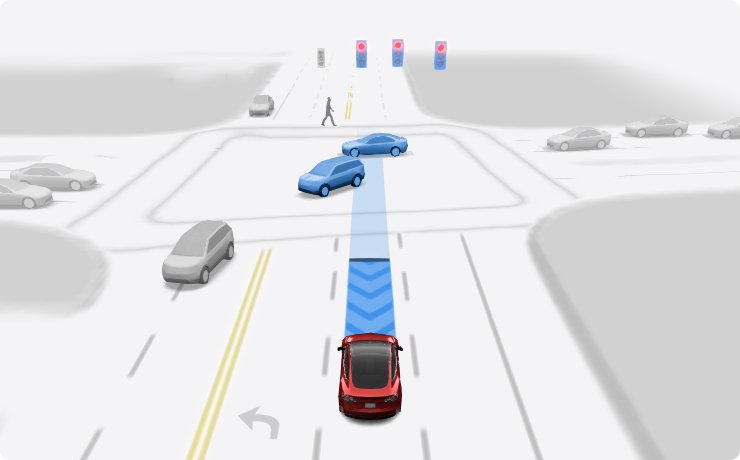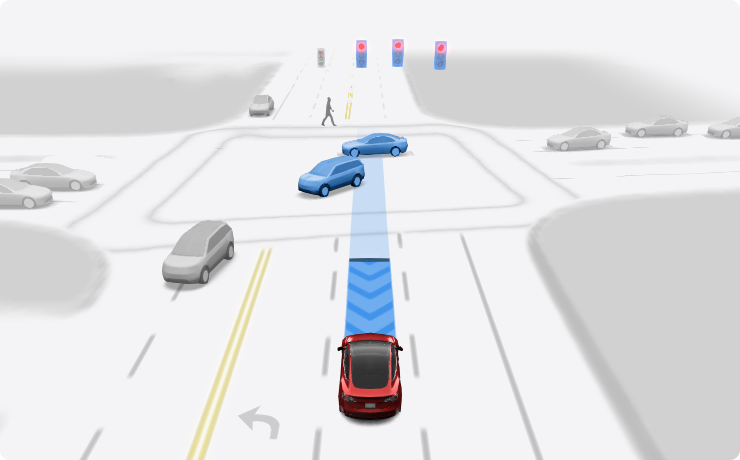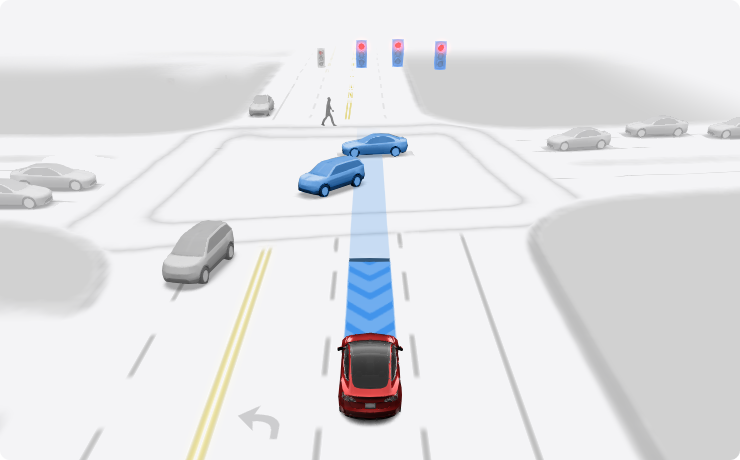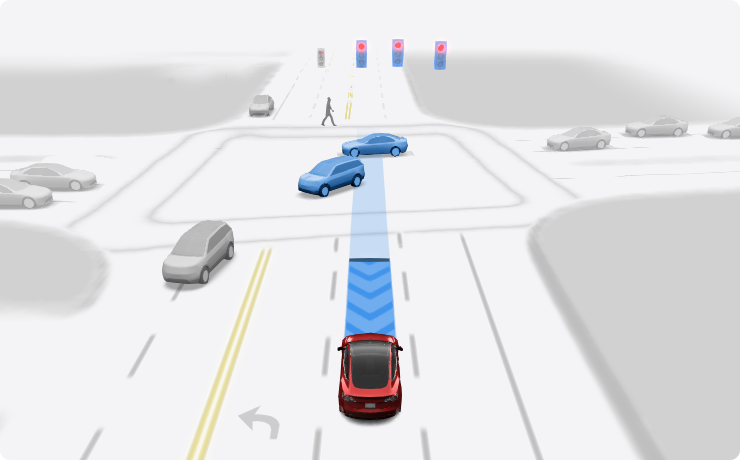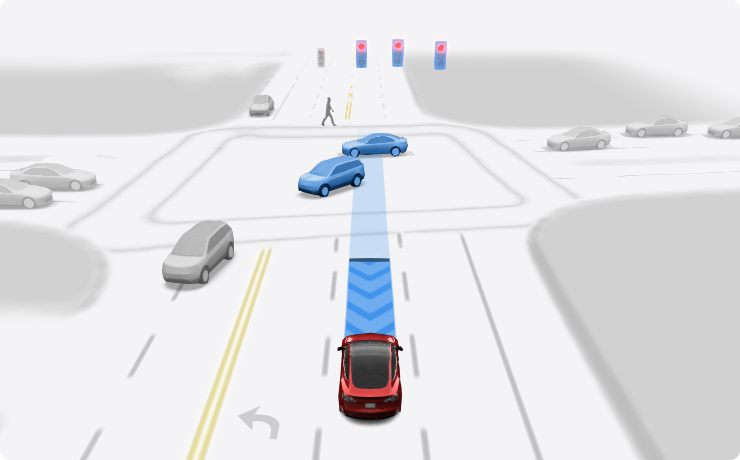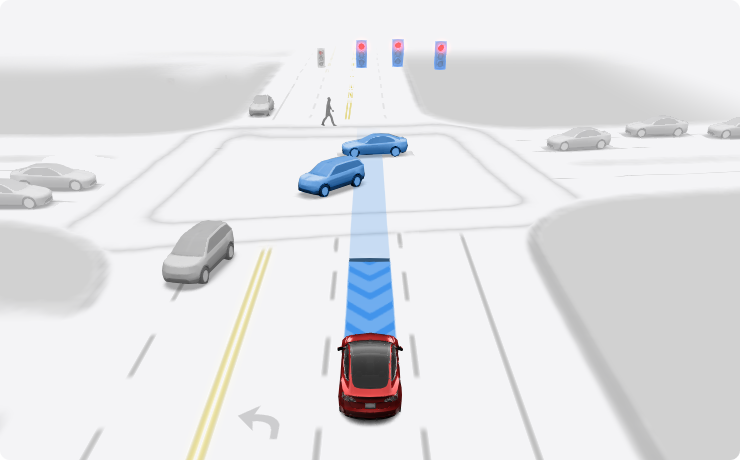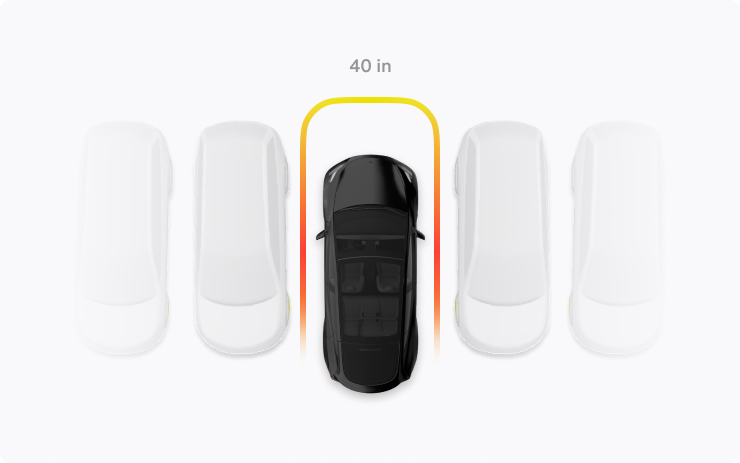Tesla 2023.7.10 Release Notes
Last updated 26-Apr-2024
This article covers Tesla 2023.7.10 Release notes including FSD Beta v11.4.2, Full Self-Driving (Beta) Suspension, Minor Fixes and generated by real cars. Tesla frequently issue a new software update release to the cars and while not every release includes new features, they do often include undocumented bug fixes. We list the release notes and allow you to search to see how feature areas have changed. We also list counties and car models where the particular feature has been seen.
For information on which versions are on specific models and years, see our Trending Tesla releases and statistics for more information.
Select the Release Family (which will include all sub versions) or enter the search term. You can also search for a version by entering its full number. If you wish to filter by country, use the 2 letter international code e.g. GB for Great Britain, US for United States or AU for Australia. Our results are now based on the release notes actually seen in cars and countries, it is possible we don't have a suitable match in your country although we current monitor cars in approx 50 counties, in which case look at the wider release notes for nearby countries.
Release 2023.7.10
Including 2023.7.10, (no cars)
Regional availability of 2023.7.10 by modelNorth America----Europe----RoW----
A more detailed heat map and release statistics are available.
FSD Beta v11.4.2
Autopilot Improvements
- Improved control through turns, and smoothness in general, by improving geometry, curvature, position, type and topology of lanes, lines, road edges, and restricted space. Among other improvements, the perception of lanes in city streets improved by 36%, forks improved by 44%, merges improved by 27% and turns improved by 16%, due to a bigger and cleaner training set and updated lane-guidance module.
- Added lane-guidance inputs to the Occupancy Network to improve detections of long-range roadway features, resulting in a 16% reduction in false negative median detections.
- Improved ego's assertiveness for crossing pedestrians in cases where ego can easily and safely cross before the pedestrian.
- Improved motorbike recall by 8% and increased vehicle detection precision to reduce false positive detections. These models also add more robustness to variance in vision frame-rate.
- Reduced interventions caused by other vehicles cutting into ego's lane by 43%. This was accomplished by creating a framework to probabilistically anticipate objects that may cut into ego's lane and proactively offset and/or adjust speed to position ego optimally for these futures.
- Improved cut-in control by reducing lane-centric velocity error by 40-50% for close-by vehicles.
- Improved recall for object partial lane encroachment by 20%, high yaw-rate cut-in by 40%, and cut-out by 26% by using additional features of the lane-change trajectory to improve supervision.
- Reduced highway false slowdowns related to underestimated velocities for faraway objects by adding 68K videos to the training set with improved auto-labeled ground truth.
- Smoothed in-lane offsetting for large vehicles by tuning the amount of lateral jerk allowed for the maneuver.
- Improved lateral control for upcoming high-curvature merges to bias away from the merging lane.
Seen in CA UA US
Seen on MSX MSX2021+ M3Y
Full Self-Driving (Beta) Suspension
Autopilot Improvements
For maximum safety and accountability, use of Full Self-Driving (Beta) will be suspended if improper usage is detected. Improper usage is when you, or another driver of your vehicle, receive five ‘Forced Autopilot Disengagements’. A disengagement is when the Autopilot system disengages for the remainder of a trip after the driver receives several audio and visual warnings for inattentiveness. Driver-initiated disengagements do not count as improper usage and are expected from the driver. Keep your hands on the wheel and remain attentive at all times. Use of any hand-held devices while using Autopilot is not allowed.
The FSD Beta feature can only be removed per this suspension method and it will be unavailable for approximately one week.
Seen in CA UA US
Seen on MSX MSX2021+ M3Y
Minor Fixes
This release contains minor improvements and bug fixes.
Seen in US
Seen on MSX MSX2021+ M3Y
Other release notes for the family: 2023.7
FSD Beta v11.4.1
Autopilot Improvements
- Improved control through turns, and smoothness in general, by improving geometry, curvature, position, type and topology of lanes, lines, road edges, and restricted space. Among other improvements, the perception of lanes in city streets improved by 36%, forks improved by 44%, merges improved by 27% and turns improved by 16%, due to a bigger and cleaner training set and updated lane-guidance module.
- Added lane-guidance inputs to the Occupancy Network to improve detections of long-range roadway features, resulting in a 16% reduction in false negative median detections.
- Improved ego's assertiveness for crossing pedestrians in cases where ego can easily and safely cross before the pedestrian.
- Improved motorbike recall by 8% and increased vehicle detection precision to reduce false positive detections. These models also add more robustness to variance in vision frame-rate.
- Reduced interventions caused by other vehicles cutting into ego's lane by 43%. This was accomplished by creating a framework to probabilistically anticipate objects that may cut into ego's lane and proactively offset and/or adjust speed to position ego optimally for these futures.
- Improved cut-in control by reducing lane-centric velocity error by 40-50% for close-by vehicles.
- Improved recall for object partial lane encroachment by 20%, high yaw-rate cut-in by 40%, and cut-out by 26% by using additional features of the lane-change trajectory to improve supervision.
- Reduced highway false slowdowns related to underestimated velocities for faraway objects by adding 68K videos to the training set with improved auto-labeled ground truth.
- Smoothed in-lane offsetting for large vehicles by tuning the amount of lateral jerk allowed for the maneuver.
- Improved lateral control for upcoming high-curvature merges to bias away from the merging lane.
Seen in CA UA US
Seen on MSX MSX2021+ M3Y
FSD Beta v11.4.2
Autopilot Improvements
- Improved control through turns, and smoothness in general, by improving geometry, curvature, position, type and topology of lanes, lines, road edges, and restricted space. Among other improvements, the perception of lanes in city streets improved by 36%, forks improved by 44%, merges improved by 27% and turns improved by 16%, due to a bigger and cleaner training set and updated lane-guidance module.
- Added lane-guidance inputs to the Occupancy Network to improve detections of long-range roadway features, resulting in a 16% reduction in false negative median detections.
- Improved ego's assertiveness for crossing pedestrians in cases where ego can easily and safely cross before the pedestrian.
- Improved motorbike recall by 8% and increased vehicle detection precision to reduce false positive detections. These models also add more robustness to variance in vision frame-rate.
- Reduced interventions caused by other vehicles cutting into ego's lane by 43%. This was accomplished by creating a framework to probabilistically anticipate objects that may cut into ego's lane and proactively offset and/or adjust speed to position ego optimally for these futures.
- Improved cut-in control by reducing lane-centric velocity error by 40-50% for close-by vehicles.
- Improved recall for object partial lane encroachment by 20%, high yaw-rate cut-in by 40%, and cut-out by 26% by using additional features of the lane-change trajectory to improve supervision.
- Reduced highway false slowdowns related to underestimated velocities for faraway objects by adding 68K videos to the training set with improved auto-labeled ground truth.
- Smoothed in-lane offsetting for large vehicles by tuning the amount of lateral jerk allowed for the maneuver.
- Improved lateral control for upcoming high-curvature merges to bias away from the merging lane.
Seen in CA UA US
Seen on MSX MSX2021+ M3Y
FSD Beta v11.4.3
Autopilot Improvements
- Improved control through turns, and smoothness in general, by improving geometry, curvature, position, type and topology of lanes, lines, road edges, and restricted space. Among other improvements, the perception of lanes in city streets improved by 36%, forks improved by 44%, merges improved by 27% and turns improved by 16%, due to a bigger and cleaner training set and updated lane-guidance module.
-Added lane-guidance inputs to the Occupancy Network to improve detections of long-range roadway features, resulting in a 16% reduction in false negative median detections.
- Improved ego's assertiveness for crossing pedestrians in cases where ego can easily and safely cross before the pedestrian.
- Improved motorbike recall by 8% and increased vehicle detection precision to reduce false positive detections. These models also add more robustness to variance in vision frame-rate.
- Reduced interventions caused by other vehicles cutting into ego's lane by 43%. This was accomplished by creating a framework to probabilistically anticipate objects that may cut into ego's lane and proactively offset and/or adjust speed to position ego optimally for these futures.
- Improved cut-in control by reducing lane-centric velocity error by 40-50% for close-by vehicles.
- Improved recall for object partial lane encroachment by 20%, high yaw-rate cut-in by 40%, and cut-out by 26% by using additional features of the lane-change trajectory to improve supervision.
- Reduced highway false slowdowns related to underestimated velocities for faraway objects by adding 68K videos to the training set with improved auto-labeled ground truth.
- Smoothed in-lane offsetting for large vehicles by tuning the amount of lateral jerk allowed for the maneuver.
- Improved lateral control for upcoming high-curvature merges to bias away from the merging lane.
Seen in CA UA US
Seen on MSX MSX2021+ M3Y
FSD Beta v11.4.4
Autopilot Improvements
- Improved short-deadline lane changes, to avoid going off-route, through better modeling of target lane vehicles to improve gap selection assertiveness.
- Improved offset consistency when controlling for static obstacles. Also improved smoothness when changing offset direction by adjusting speed more comfortably.
- Improved handling of oncoming cars on narrow unmarked roads by improving prediction of oncoming car's trajectory and leaving enough room for them to pass before re-centering.
- Improved Occupancy Flow prediction from the Occupancy Network for arbitrary moving obstacles by 8%.
- Expanded usage of the new object ground truth autolabeler for the NonVRU detection model, improving distant vehicle recall and geometry precision for semi-trucks, trailers, and exotic vehicles.
- Improved VRU control by expanding planning scope to control gently for low-confidence detections that may interfere with ego's path.
- Improved handling for VRUs near crosswalks by predicting their future intent more accurately. This was done by leveraging more kinematic data to improve association between crosswalks and VRUs.
- Improved ego's behavior near VRUs by tuning their assumed kinematic properties and utilizing available semantic information to classify more accurately their probability of intersecting ego's path.
- Improved Automatic Emergency Braking recall in response to cut-in vehicles and vehicles behind ego while reversing.
Seen in CA UA US
Seen on MSX MSX2021+ M3Y
FSD Beta v11.4.5
Autopilot Improvements
- Improved short-deadline lane changes, to avoid going off-route, through better modeling of target lane vehicles to improve gap selection assertiveness.
- Improved offset consistency when controlling for static obstacles. Also improved smoothness when changing offset direction by adjusting speed more comfortably.
- Improved handling of oncoming cars on narrow unmarked roads by improving prediction of oncoming car's trajectory and leaving enough room for them to pass before re-centering.
- Improved Occupancy Flow prediction from the Occupancy Network for arbitrary moving obstacles by 8%.
- Expanded usage of the new object ground truth autolabeler for the NonVRU detection model, improving distant vehicle recall and geometry precision for semi-trucks, trailers, and exotic vehicles.
- Improved VRU control by expanding planning scope to control gently for low-confidence detections that may interfere with ego's path.
- Improved handling for VRUs near crosswalks by predicting their future intent more accurately. This was done by leveraging more kinematic data to improve association between crosswalks and VRUs.
- Improved ego's behavior near VRUs by tuning their assumed kinematic properties and utilizing available semantic information to classify more accurately their probability of intersecting ego's path.
- Improved Automatic Emergency Braking recall in response to cut-in vehicles and vehicles behind ego while reversing.
- Introduced Automatic Emergency Braking on general obstacles detected by Occupancy Network.
Seen in CA US
Seen on MSX MSX2021+ M3Y
FSD Beta v11.4.6
Autopilot Improvements
- Improved short-deadline lane changes, to avoid going off-route, through better modeling of target lane vehicles to improve gap selection assertiveness.
- Improved offset consistency when controlling for static obstacles. Also improved smoothness when changing offset direction by adjusting speed more comfortably.
- Improved handling of oncoming cars on narrow unmarked roads by improving prediction of oncoming car's trajectory and leaving enough room for them to pass before re-centering.
- Improved Occupancy Flow prediction from the Occupancy Network for arbitrary moving obstacles by 8%.
- Expanded usage of the new object ground truth autolabeler for the NonVRU detection model, improving distant vehicle recall and geometry precision for semi-trucks, trailers, and exotic vehicles.
- Improved VRU control by expanding planning scope to control gently for low-confidence detections that may interfere with ego's path.
- Improved handling for VRUs near crosswalks by predicting their future intent more accurately. This was done by leveraging more kinematic data to improve association between crosswalks and VRUs.
- Improved ego's behavior near VRUs by tuning their assumed kinematic properties and utilizing available semantic information to classify more accurately their probability of intersecting ego's path.
- Improved Automatic Emergency Braking recall in response to cut-in vehicles and vehicles behind ego while reversing.
- Introduced Automatic Emergency Braking on general obstacles detected by Occupancy Network.
Seen in CA US
Seen on MSX MSX2021+ M3Y
FSD Beta v11.4.7
Autopilot Improvements
- Improved short-deadline lane changes, to avoid going off-route, through better modeling of target lane vehicles to improve gap selection assertiveness.
- Improved offset consistency when controlling for static obstacles. Also improved smoothness when changing offset direction by adjusting speed more comfortably.
- Improved handling of oncoming cars on narrow unmarked roads by improving prediction of oncoming car's trajectory and leaving enough room for them to pass before re-centering.
- Improved Occupancy Flow prediction from the Occupancy Network for arbitrary moving obstacles by 8%.
- Expanded usage of the new object ground truth autolabeler for the NonVRU detection model, improving distant vehicle recall and geometry precision for semi-trucks, trailers, and exotic vehicles.
- Improved VRU control by expanding planning scope to control gently for low-confidence detections that may interfere with ego's path.
- Improved handling for VRUs near crosswalks by predicting their future intent more accurately. This was done by leveraging more kinematic data to improve association between crosswalks and VRUs.
- Improved ego's behavior near VRUs by tuning their assumed kinematic properties and utilizing available semantic information to classify more accurately their probability of intersecting ego's path.
- Improved Automatic Emergency Braking recall in response to cut-in vehicles and vehicles behind ego while reversing.
- Introduced Automatic Emergency Braking on general obstacles detected by Occupancy Network.
Seen in CA US
Seen on MSX MSX2021+ M3Y
Full Self-Driving (Beta) Suspension
Autopilot Improvements
For maximum safety and accountability, use of Full Self-Driving (Beta) will be suspended if improper usage is detected. Improper usage is when you, or another driver of your vehicle, receive five ‘Forced Autopilot Disengagements’. A disengagement is when the Autopilot system disengages for the remainder of a trip after the driver receives several audio and visual warnings for inattentiveness. Driver-initiated disengagements do not count as improper usage and are expected from the driver. Keep your hands on the wheel and remain attentive at all times. Use of any hand-held devices while using Autopilot is not allowed.
The FSD Beta feature can only be removed per this suspension method and it will be unavailable for approximately one week.
Seen in CA UA US
Seen on MSX MSX2021+ M3Y
Minor Fixes
This release contains minor improvements and bug fixes.
Seen in US
Seen on MSX MSX2021+ M3Y
Park Assist
Autopilot Improvements
Tesla Vision Park Assist provides visual and audio alerts of surrounding objects. This feature uses the occupancy network to predict high-definition outlines of objects 360 degrees around the car.
Note: Tesla Vision Park Assist is for guidance purposes only and is not a substitute for an aware driver. Please be attentive and avoid obstacles as required.
Seen in US
Seen on MSX2021+
Reboot after an update
Lot's of people have random issues after a software install, many of them curing themselves after a reboot. As a general rule, we'd suggest always doing a scroll wheel reboot after a software update, simply press the two steering wheel scroll wheels until the screen turns off and then let go. The screen will come back within a minute or so, depending on hardware. It's certainly worth doing this is you notice any unusual behaviour, but prevention is better than cure. There's a second reset option which is to change the car configuration slightly, either the language, or wheel type. This also causes the car to do a soft reset and this has returned missing features such as Tidal. Our Guide to rebooting your Tesla provides more details.
How to get the latest Tesla Software Update?
In a word, you can't really force it yourself although you can help the car to download the update once it's been allocated to have an update. To do so, connect the car to WiFi, and maybe even consider a wireless hotspot when in use. Car's not connected to WiFi generally do not receive updates quickly.
If you visit the software screen and see the car hasn't checked for a few days, perform a scroll wheel reset. The car typically checks as soon as it reboots and we've had a software update immediately afterwards as a result.
You may find the car sticks at 50% for a while. We've seen reports that keeping the car awake will help speed past past this point as the car will try and sleep and halt the process. Even keeping the mobile phone app open may help to prevent the car sleeping.
Why do I not get some of the features or changes mentioned?
There are a number of reasons why a particular feature or change may not be included when your car upgrades. These include regional restrictions, hardware specific features, model specific updates and some changes are linked to software options purchased such as EAP or FSD. There are also times when software release notes are provided but only Tesla test engineers get the updates.
Not having a listed feature or update for a particular car is therefore quite normal. Some websites try to detail which cars get which features but this is often inaccurate, such as the blended braking update that came out with 2022.16 and the alternate routes option in 2022.28.
Against each release note we now list the car models and countries where a particular release note has been seen.
I thought I already had a listed feature?
Just as a feature may not land in every car, the feature may be mentioned in later releases when your car already has it. The release notes in the car are tuned to your car so, and while in general the car will only report a new feature once, that is not a rule that always holds true. Some websites say the feature is not available in your country whereas the reality is the feature has been there for some time
I'm on the FSD City Streets Beta
The FSD City Streets Beta is usually 2 to 3 releases behind the general software releases. This is normal.
Numbering convention
Release notes are numbered roughly using the a year.family.major.minor format. The year is self explanatory, the family release typically increments in 4's and is roughly the week of the year when the release family is launched, although these tend to slip over the course of the year. The major and minor release numbers of much debated, we personally believe these rarely contain new features not included in the family, and if there are differences it is linked to hardware specific versions.
When reviewing release notes, you may be interested in how a feature has evolved. To enable this we have also included a keyword search where you can search for a word or phrase and we will filter the results accordingly.
